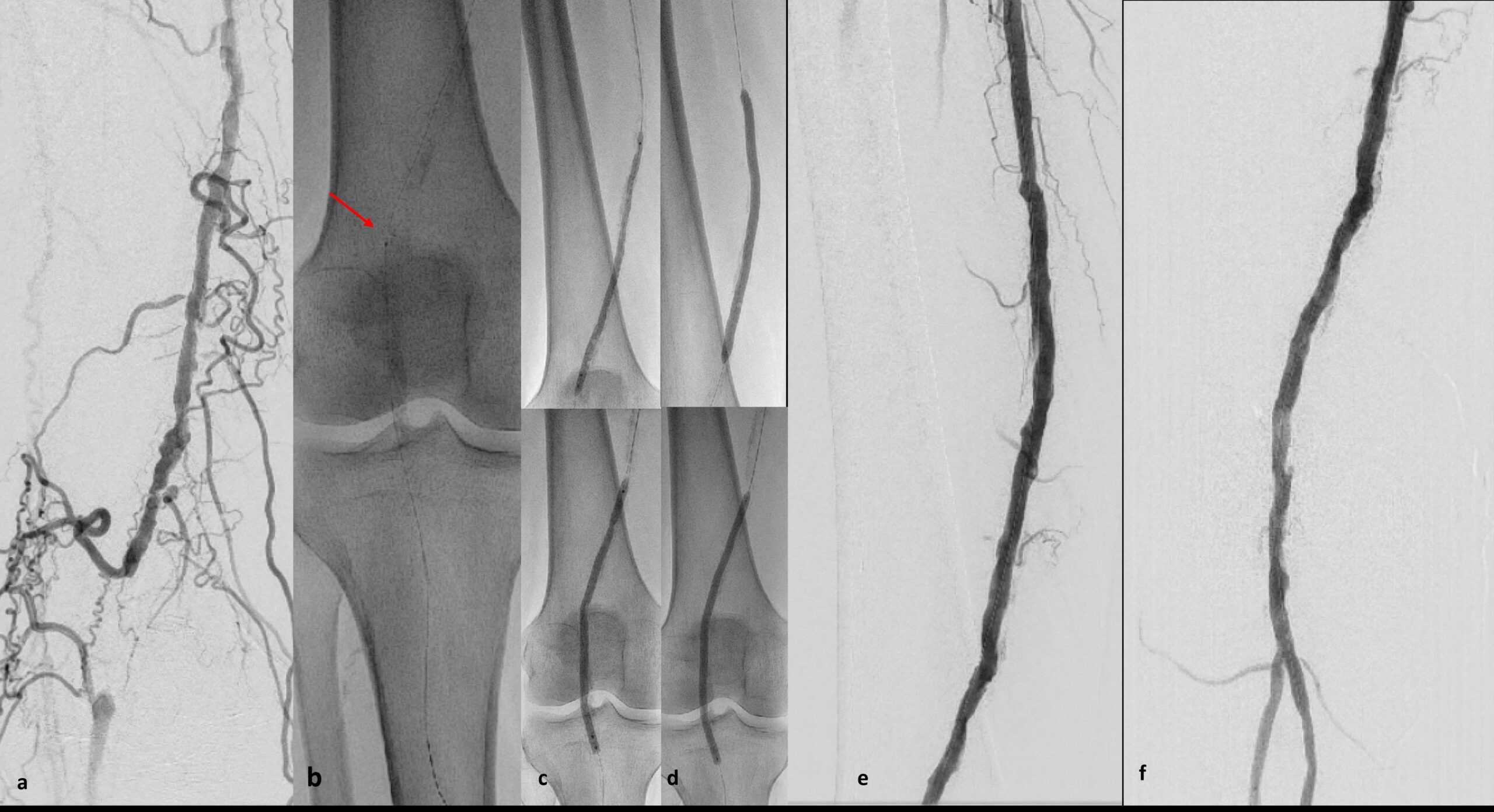Femoropopliteal arterial lesions, often characterized by significant calcifications, present substantial challenges for endovascular interventions. Traditional balloon angioplasty can lead to suboptimal results due to significant dissection and inadequate acute luminal gain. Vessel preparation refers to the techniques used to modify or debulk plaque to optimize the vessel’s condition before the chosen endovascular treatments such as drug-coated angioplasty or stenting. The goal of vessel preparation is to optimize the outcome of the primary intervention by removing or modifying plaque, achieve the optimal acute luminal gain with minimum vessel trauma, and create a more uniform and receptive surface for drug delivery.
Scoring balloons utilize embedded or external, longitudinal or circumferential scoring elements, such as nitinol wires, that exert focused force on the plaque during inflation, offering a more controlled and less traumatic approach to plaque modification. As a result, the combination of low-pressure angioplasty and targeted controlled fractures within the plaque facilitates a more uniform expansion and reduces the risk of dissection. Moreover, plaque modification may enhance drug penetration from DCBs into the vessel wall but also protect the subsequent DCB application from rupturing during inflation when facing hard atherosclerotic lesions.
Considering the indications and patient selection criteria, vessel preparation takes on heightened importance in younger patients presenting with claudication. This contrasts with older patients suffering from CLTI, where the urgency of preventing a major amputation often leads to a lower threshold for stenting. In the younger claudication group, preserving future treatment options necessitates a more meticulous endovascular approach.
Regarding the technical challenges of endovascular treatment, achieving an optimal angioplasty result presents a significant challenge in calcified occlusions when subintimal lesion crossing is required and atherectomy is contraindicated. In such scenarios, high-pressure balloon angioplasty alone is often insufficient, and a more sophisticated approach is required, especially for severely calcified, non-stent-friendly lesions. (Figure 1). The main indications for vessel preparation using scoring balloons in femoropopliteal lesions include calcified and/or resistant fibrotic stenosis and occlusions, especially following subintimal or retrograde popliteal crossing where atherectomy is not an option.
Several scoring balloon catheters are currently available for femoropopliteal use and include the AngioSculpt™ by Philips, the APERTA NSE™ by NIPRO, the Scoreflex‡ NC by Abbott, the Tri-Wedge by APR Medtech, and the UntrascoreTM by BD. The Chocolate™* PTA balloon by Medtronic could also be included in the wider scoring balloon category as it is a semi-compliant balloon encased in a nitinol-constraining structure, designed to create a controlled, less traumatic inflation.
Published data on vessel prep using scoring balloons include several non-randomized studies. [2] Horie K. et al. reported positive outcomes regarding luminal gain and dissections following scoring vs. plain balloon angioplasty in a propensity score matching study (84 matched pairs). [3] More recently Haraguchi T. et al. reported superior technical success when a newer technology scoring balloon vs. conventional scoring balloons was used in another propensity score-matched analysis (50 matched pairs). [4] While there isn’t a definitive large-scale randomized trial directly comparing scoring versus conventional balloon angioplasty for femoropopliteal lesions, the available evidence suggests that scoring balloons may offer advantages in terms of technical success and lesion preparation, especially in calcified or complex lesions. [1, 5] A low complication rate has been recently reported following the use of a specific scoring balloon in the femoropopliteal segment, mainly associated with a device tip break, balloon rupture, and withdrawal difficulty in severely calcified vessels. Interestingly, balloon rupture was noted at a higher rate amongst calcified vessels (60.6% vs 14.8%), p= < 0.001, and in cases of SFA angioplasty (39.4% vs 11.3%), p = <0.001. [6] Although scoring balloons are recommended for calcified and/or fibrotic femoropopliteal lesions, in a recent Interdisciplinary Expert Opinion Statement [7], robust comparative safety and efficacy data on both immediate and long-term outcomes versus conventional balloons is lacking and warrants investigation in dedicated randomized controlled trials.
In conclusion, vessel preparation using scoring balloons is a valuable technique for optimizing outcomes in femoropopliteal arterial interventions. Careful patient selection, meticulous technique, and ongoing research are essential to maximize the benefits of this technology.


